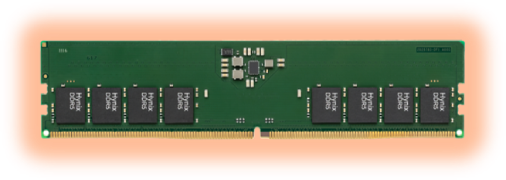Optimizing Telecom Infrastructure: Memory Components in Communications Hardware

In the design and operation of telecommunications infrastructure, the choice of memory components is critical. Whether in switches, routers, satellites, or base stations, embedded memory components help to ensure that these systems perform reliably and efficiently. When designing communications hardware, engineers and designers must carefully consider the type of memory they use, as well as how it integrates into the overall system to meet the demanding requirements of modern telecom networks.
Flash Memory Cards: Versatile and Durable Storage
Flash memory cards, like SD Cards and microSD Cards, are used in telecom infrastructure due to their versatility, durability, and non-volatile nature. They can be found in network switches, base stations, and other equipment when reliable and removable data storage is essential.
- Use Cases: Flash memory cards are ideal for storing configuration files, firmware, and other critical data that must remain intact even during power outages. In base stations, for instance, flash memory cards can store the operating system and other essential software that enable the station to function autonomously in remote locations. These cards are also used for logging data and maintaining system configurations.
- Design Considerations: Engineers should prioritize high endurance and reliability when selecting flash memory cards. Telecom equipment often operates in harsh environments, so the flash memory must withstand temperature extremes, humidity, and potential electrical interference. The cards should also offer high write endurance, as frequent updates to configuration data can wear out memory cells over time. Error correction capabilities are another critical feature to ensure data integrity, especially in systems where downtime can lead to significant service disruptions.
eMMC: Integrated, Compact Storage Solutions
eMMC is another form of flash memory widely used in telecommunications hardware, particularly in devices where space and power consumption are constrained. eMMC integrates both flash memory and a controller into a single package that gets soldered onto the motherboard, offering a compact and efficient storage solution.
- Use Cases: eMMC is commonly used in routers, modems, and satellite communications equipment. Its compact size makes it ideal for mobile and embedded systems, such as those found in satellite transceivers and small base stations. The integrated controller simplifies system design, reducing the overall footprint and power requirements.
- Design Considerations: When designing with eMMC, engineers should consider the specific performance requirements of their application. While eMMC is cost-effective and space-efficient, it typically offers lower write speeds and endurance compared to SSDs. In telecom applications that involve frequent data logging or firmware updates, selecting an eMMC with high endurance and reliable error correction mechanisms is essential. The lifespan of eMMC should align with the expected operational life of the telecom equipment to avoid premature failures.
DRAM: High-Speed Data Processing
DRAM is the workhorse of telecom infrastructure when it comes to high-speed data processing. DRAM is volatile memory, meaning it requires power to maintain data, but it offers fast read and write speeds, which are critical for the real-time processing demands of telecom equipment.
- Use Cases: DRAM is used in network switches, routers, and servers, where it serves as the primary memory for buffering data, running complex algorithms, and managing large volumes of traffic. In satellite communications, DRAM is essential for processing data in real time, ensuring that signals are transmitted and received without delays.
- Design Considerations: Engineers must balance capacity, speed, and power consumption when selecting DRAM for telecom applications. While high-capacity DRAM can enhance performance, it also increases power consumption and heat generation, which are critical factors in telecom environments that often operate under strict power and thermal constraints. Additionally, choosing DRAM with error-correcting code (ECC) capabilities is crucial for maintaining data integrity, especially in mission-critical applications where even minor data corruption can lead to issues.
Optimizing Memory for Reliability and Performance
In telecommunications infrastructure, the reliability and performance of memory components directly impact the overall stability and efficiency of the network. Engineers must consider several key factors when designing systems:
- Environmental Tolerance: Memory components used in telecom equipment must be able to withstand environmental challenges, such as extreme temperatures, humidity, and electromagnetic interference. Selecting components with extended temperature ranges and ruggedized designs can prevent failures in harsh operating conditions. SMARTsemi components are offered in Industrial (-40oC to +85oC) and wide (-40oC to +105oC) operating ranges.
- Data Integrity: Error correction is vital in preventing data corruption, especially in environments where memory components are subject to high levels of stress or interference. ECC in DRAM and robust error correction algorithms in flash memory are essential for maintaining system reliability. SMARTsemi components are tested to the industry leaders’ device specifications.
- Endurance and Longevity: The expected operational life of telecom equipment should guide the selection of memory components. Flash memory with high write endurance and DRAM with high MTBF (Mean Time Between Failures) ensure that the system remains operational without frequent maintenance or component replacements. SMARTsemi devices are ideal for long-lifecycle, rugged telecom environments.
- Power Efficiency: In many telecom applications, particularly those involving satellites or remote base stations, power efficiency is a critical concern. Engineers must choose memory components that offer the best balance between performance and power consumption to optimize the overall energy efficiency of the system.
Memory components like flash memory cards, eMMC, and DRAM are part of the backbone of modern telecommunications infrastructure, enabling everything from data storage to real-time processing. For engineers and designers, selecting the right memory technology involves careful consideration of factors like endurance, reliability, performance, and environmental tolerance. By making informed choices, they can ensure that the telecom infrastructure they build is robust, efficient, and capable of meeting the demands of an increasingly connected world.
SMARTsemi is your supply chain partner for DRAM components, eMMC solutions, and SD/microSD Flash Memory Cards for long-life applications. With 20+ years of industry experience, we understand your challenges and have aligned our priorities with yours to simplify your memory chip supply chain for the long run. We know what you need before you need it. Get a jump start and request a sample today.







